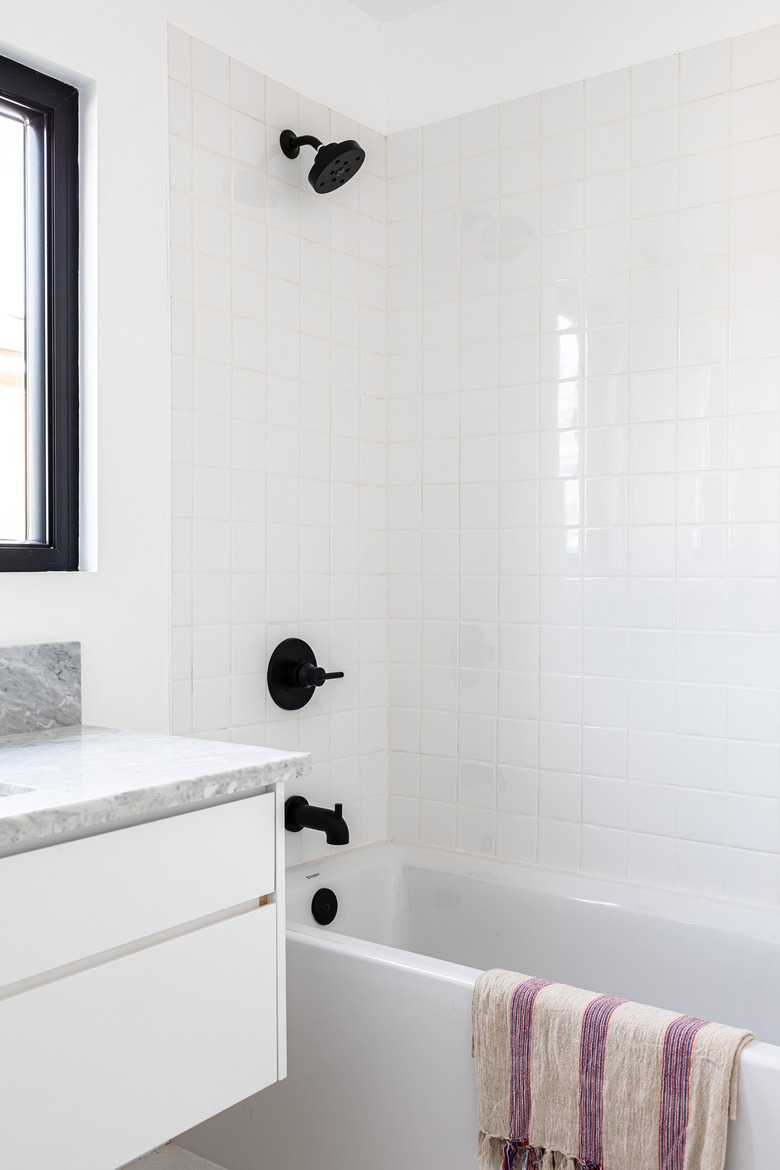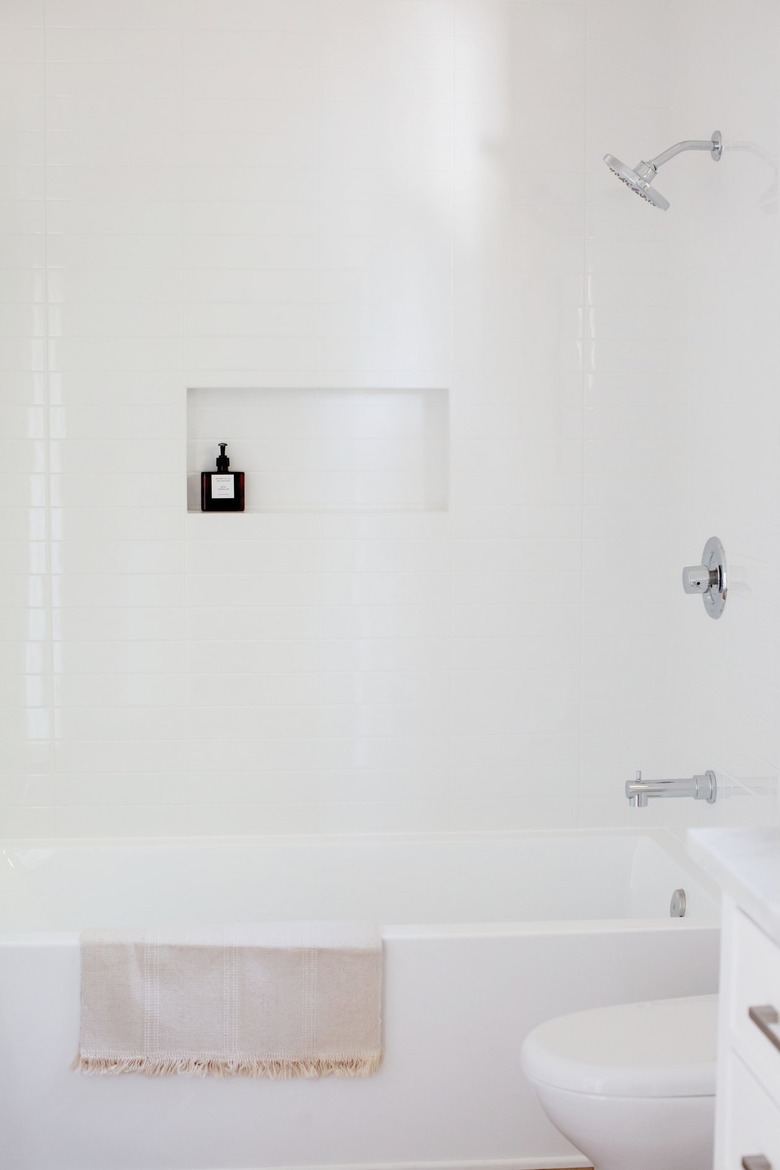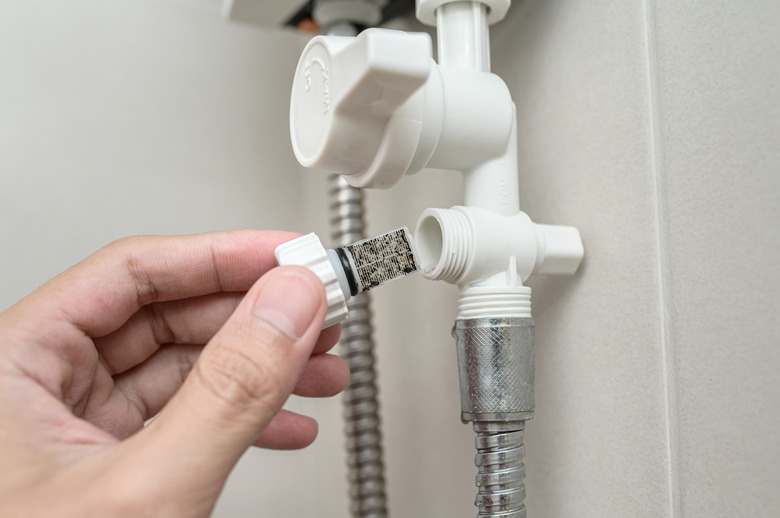How To Adjust The Diverter Valve In My Bathtub Shower
We may receive a commission on purchases made from links.
A diverter allows you to release water from the tub spout or showerhead without needing a separate set of handles for each exit. When the diverter valve closes, water pressure builds in the pipes until it travels upward and out of the showerhead. When the valve is open, water follows the path of least resistance and comes out of the tub spout.
For the most part, diverter valves aren't really adjustable. They only have two positions: open and closed. If water leaks out of either the tub spout or the showerhead — or completely fails to reach the showerhead — the rubber seal on the diverter likely needs to be replaced.
However, in areas with hard water, calcium buildup can cause a "clunky" diverter that's difficult to push or pull into place, resulting in a half-open gate for the water to flow through. For diverters that are part of the spout assembly (versus the handle or cartridge assembly), try cleaning the spout before purchasing a diverter valve replacement kit.
Cleaning a Tub Spout
Cleaning a Tub Spout
There are two solutions for cleaning a tub spout or unsticking a diverter valve rod. First, spray any kind of cooking spray on the rod to give it some lubrication. This might be all that's needed to loosen the mechanism on a difficult-to-use diverter.
If you suspect that calcium deposits have gotten in the way of the diverter gate or gasket inside the spout, all you need is a plastic sandwich bag, some white vinegar and a rubber band. Fill the bag with enough vinegar to completely submerge the end of the spout. Secure the ends of the bag with a rubber band.
Allow the bag to stay on the tub spout for several days (if possible) before removing it. Then, let water run through the tub spout and scrub inside the spout with a clean toothbrush for good measure.
Types of Bathtub Shower Diverters
Types of Bathtub Shower Diverters
It's not uncommon for bathtub shower diverters to fail, so replacement kits are available for purchase. It's helpful to know which brand manufactured your shower faucet so you select compatible parts. You'll also need to know what type of diverter you already have so you can choose the correct one.
Rod-type diverters (also called pull-up or lift gate diverters) attach to the end of the tub spout and divert water when pulled up. Push-button diverters are located under the faucet handle and, as the name implies, divert water when pushed in. Diverter-cartridge combos may be controlled with a separate handle or within the same handle that controls water temperature.
Push-button and diverter-cartridge combos require the entire shower faucet to be disassembled to access the diverter. This is still a beginner-friendly task, but you'll need to turn off the water before you start. With rod-type diverters, you only have to remove the tub spout — and even that's not a strict requirement if you don't mind lying on your back in the tub.
Replace the Diverter Valve
Replace the Diverter Valve
Once you've turned off the water supply leading to the bathtub/shower and have removed the faucet trim, escutcheon plate and old diverter, you're ready to replace diverter cartridges and push-button diverters. Diverter-cartridge combos slide into place and are secured with a retaining nut. Push-button diverters thread into their own pipe under the hot and cold handle(s).
Rod-type diverters have three separate parts that require minor assembly. Simply place the rubber gasket inside or outside (depending on the size of the gasket) the "cup" on the plastic gate. Slide the plastic gate into the end of the tub spout so that the "cup" faces the wall. Insert the rod from the top of the spout and press it firmly into the clip on the other side of the plastic gate.


